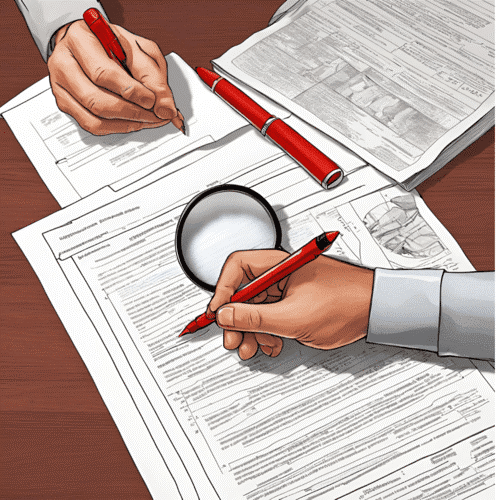
Introduction Why Proofreading and Editing Matter
As you conclude a writing piece, such as a blog post, academic paper, or novel, proofreading and editing provide the last chances to refine your work. These stages are not just for identifying typos; they are essential for guaranteeing that your message is coherent and influential. Without them, even the most exceptional ideas can become obscured by numerous errors.
Understanding the Difference
Proofreading
The final check of your document is called proofreading. It involves identifying and fixing superficial errors such as grammar mistakes, misspelled words, and punctuation problems. Consider it the last opportunity to catch and correct mistakes in your work.
Editing
Revising content in editing is a more thorough process that aims to enhance clarity, coherence, and overall readability. This is the stage where you fine-tune your arguments, restructure your work, and make sure that your message connects effectively with your audience.

The Proofreading Process
Taking a Break Before Proofreading
Before you start proofreading, take a short break. Stepping back from your work can allow you to come back with a fresh perspective, which can make it easier to notice any errors you may have overlooked previously.
Reading Aloud
Re-reading your text out loud can make a huge difference. It allows you to listen to the rhythm of your words and brings attention to any awkward phrasing or overlooked words that may go unnoticed when reading silently.
Using Tools and Technology
Utilize resources such as spell checkers and grammar apps to detect mistakes, but avoid depending solely on them. These tools may overlook contextual errors or provide inaccurate suggestions.
Checking for Common Errors
Keep an eye out for typical errors like using homophones incorrectly (for example, "their" vs. "there"), wrong verb tenses, and mistakes in punctuation. If you're not careful, these errors can
Effective Editing Strategies
Structuring Your Content
Begin your editing process with a well-organized document. Make sure that your content includes a concise introduction, body, and conclusion. Each part should transition logically to the next, making it easy for readers to follow your argument.
Improving Flow and Clarity
Please ensure that every sentence contributes to the overall narrative. Eliminate redundant phrases and clarify ambiguous points to enhance readability and ensure that the message is straightforward.
Consistency in Style and Tone
Maintaining consistency is crucial. Ensure that your document maintains a uniform style and tone, which encompasses adhering to consistent formatting and using an appropriate tone for your audience.
Seeking Feedback from Others
It's often valuable to seek input from others for the best insights. Ask someone to review your work and give feedback. Their fresh perspective can help identify issues that you may have missed.
Common Mistakes to Avoid
Overlooking Small Details
The small details can be missed when focusing on major edits. Remember to carefully review every comma, period, and space as they all matter.
Ignoring the Purpose of the Text
Keep your attention on the aim of your writing. Revising should improve your capacity to accomplish your goal, whether it’s informing, persuading, or entertaining.
Skipping the Final Review
Always complete a final review. Making this last examination is crucial to guarantee that no mistakes have been overlooked and that everything is refined to a high level of quality.
Conclusion: Perfecting Your Work
It is important to understand that proofreading and editing are essential components of producing a polished and professional piece of writing, rather than just the final steps. By dedicating the necessary time and attention to these stages, you can guarantee that your work not only meets but also surpasses expectations. Therefore, it is crucial to apply these strategies and allow your writing to stand out.
FAQs
Begin by taking a break after writing. When you return, read through your work slowly, and consider reading aloud to catch errors.
o Practice regularly and seek feedback from others. Also, consider studying grammar and style guides to refine your skills.
They can be useful for catching basic errors but should be complemented with manual proofreading to catch nuanced mistakes.
Develop a style guide for your document and adhere to it throughout. Ensure uniformity in formatting, tone, and style.
Yes, a fresh set of eyes can provide valuable feedback and help catch errors you might miss, improving the overall quality of your work.







Leave a Reply